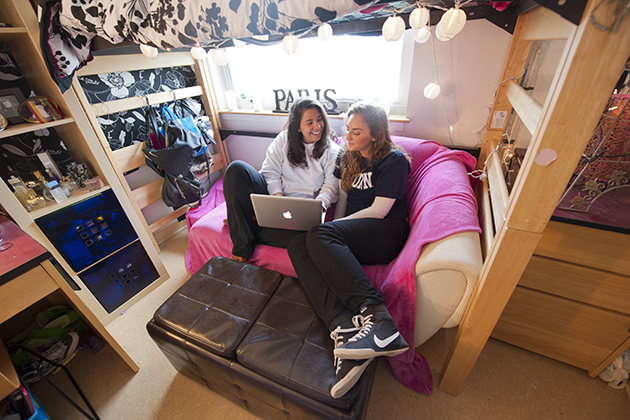UConn trustees have approved the start of planning for several building projects anticipated under Next Generation Connecticut, the first steps in the wide-ranging initiative to greatly expand the University’s strength in STEM fields (science, technology, engineering, and math).
Two new residence halls at Storrs, a state-of-the-art research complex, and student housing at Stamford are being considered among the first capital projects launched under Next Gen, which the General Assembly approved in its 2013 legislative session.
The UConn Board of Trustees authorized budgets in November to start the planning work for the research complex and new residence halls in Storrs, and the University is collecting ideas from developers and property owners through Jan. 17 on ways to provide housing for up to 400 students near UConn Stamford.
University officials are also actively planning for the relocation of the Greater Hartford campus from its current site in West Hartford to a downtown Hartford location, which they say will create and strengthen synergies between UConn and the many public and private entities nearby.
Under Next Gen, the state is allocating $1.5 billion over 10 years for capital projects to support UConn’s curriculum and research expansions as a way to put the University’s expertise to work to help create and retain Connecticut jobs.
The plan is anticipated to increase total UConn enrollment by up to 6,580, or about 30 percent, with almost 3,300 of them being STEM students. The trustees’ votes in November authorized budgets to support the start of planning for:
- A new STEM Research Center with labs and other critical research facilities in about 350,000 square feet of space, at a Storrs campus location yet to be determined. It’s described as a keystone in the effort to fulfill Next Generation Connecticut’s initiatives.
Laura Cruickshank, the University’s master planner and chief architect, says renovating the existing university lab buildings can often be difficult or impossible because they were originally designed in ways that don’t accommodate the technology, ventilation, safety features, and other needs of today’s high-tech research facilities.
“What once worked as a research lab doesn’t work anymore,” she said. “The requirements from a scientific perspective have changed. There are buildings we literally can’t reuse for those purposes, so we have to build new.”
- A residence hall for Honors Program students and another for STEM students, if the increase in enrollment occurs as projected. Both would have space for about 600 to 800 students, and both would be anticipated to open in 2016 or 2017, in time for the enrollment increase. The locations, final construction costs, and other details will be determined during the planning process now underway.
Cruickshank says she is working closely with the Office of Student Affairs, the Provost’s Office, and others throughout UConn to ensure that the residential component of the buildings complements the academic programs in which its student residents will be enrolled.
- A potential renovation of the Gant Math & Science Complex for STEM faculty offices and teaching facilities. The building, which dates to the early 1970s, needs significant upgrades and its laboratories are inadequate for today’s research, but University officials say it could be transformed into a valuable teaching and office building. The future of the nearby Torrey Life Sciences complex has yet to be determined.
“Where we can reuse or adapt a building to a different use, we will try to do that, as long as it makes sense to invest the money into the building,” Cruickshank said. “Torrey is never going to work as a research lab building, for instance, but maybe it will work for classrooms or offices. We have yet to get far enough into that to know which way we’ll go.”
- The addition of another chilled water generator at the Central Utility Plant, increasing the capacity to allow new and existing buildings to be added to the system.
UConn is also in the midst of a process to review “expressions of interest” submitted by Jan. 17 from developers or owners of property close to the Stamford campus, and/or who can develop housing options on University-owned land where the parking garage is currently sited.
The University is asking developers and landowners for ideas that would incorporate the need for up to 400 beds of student housing, renting in the range of about $800 per bed monthly.
Providing student housing at the Stamford campus is one of several elements in Next Generation that are intended to help strengthen the offerings at UConn’s regional campuses. Next Gen also includes the Hartford campus relocation, and millions to modernize Avery Point’s classrooms, labs, and the waterfront dock area.




